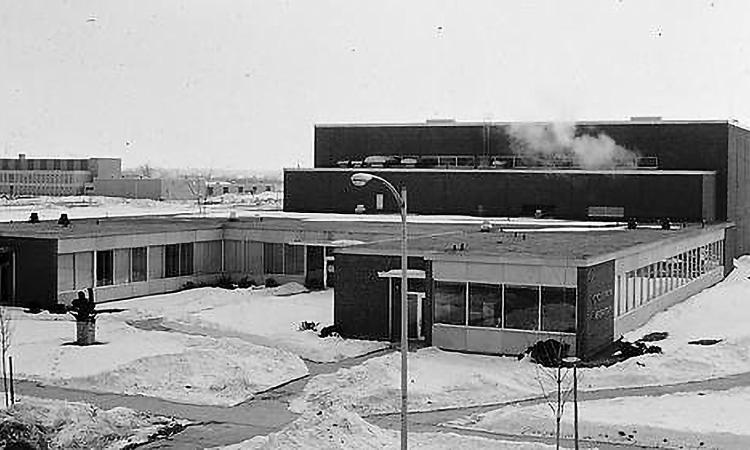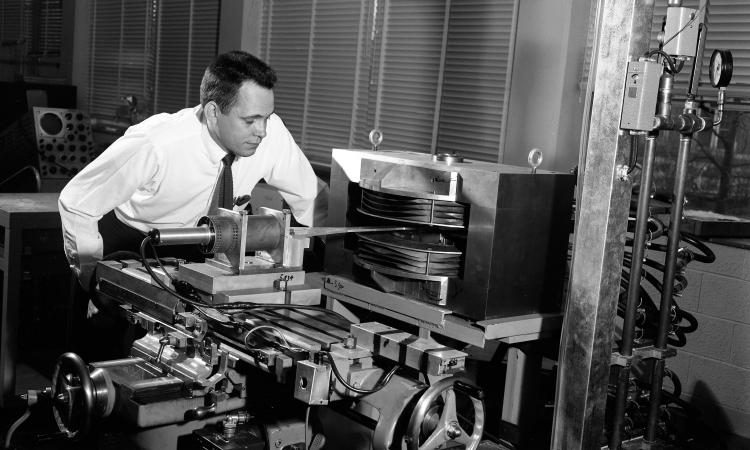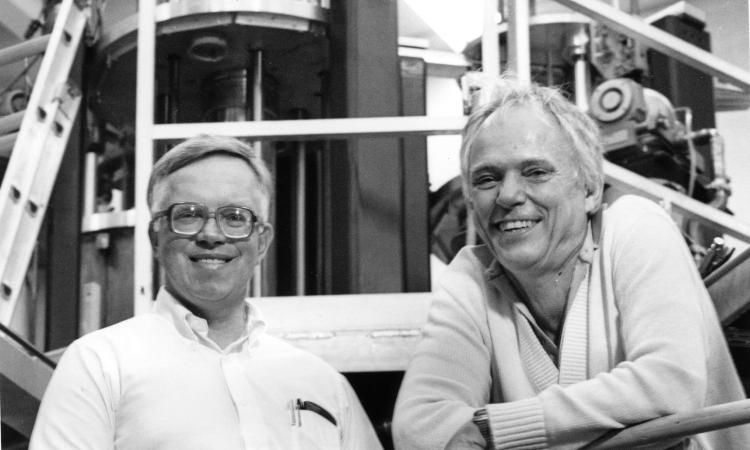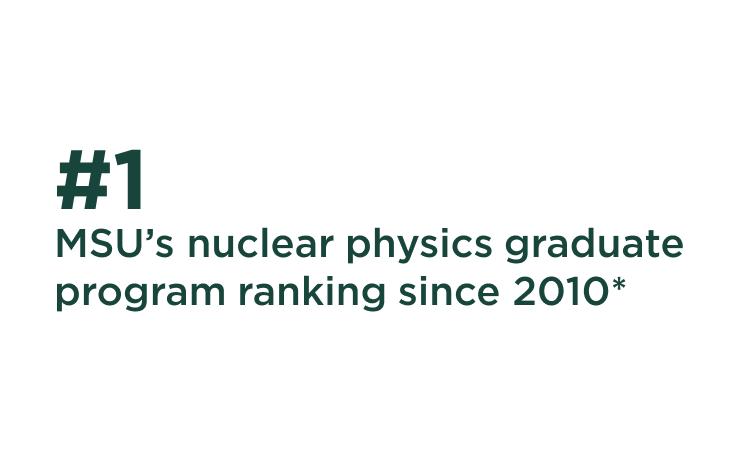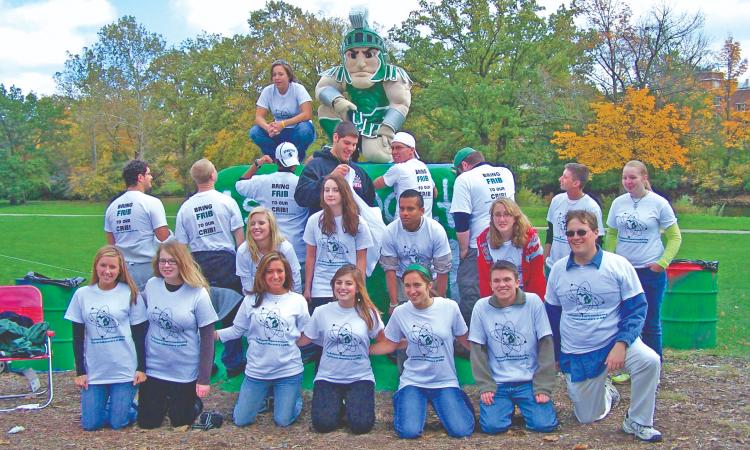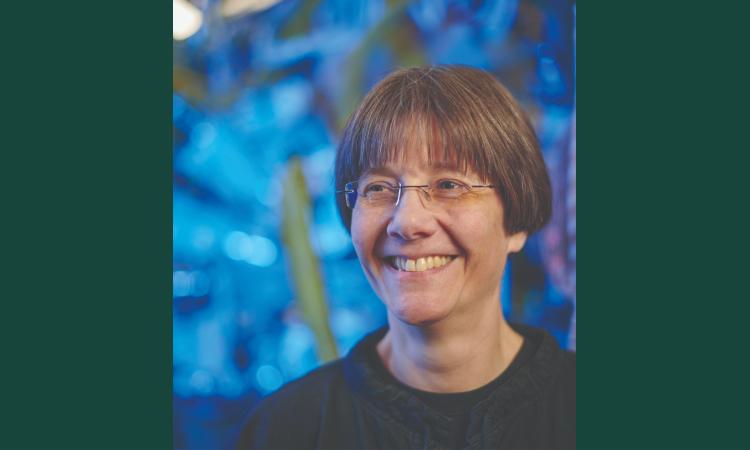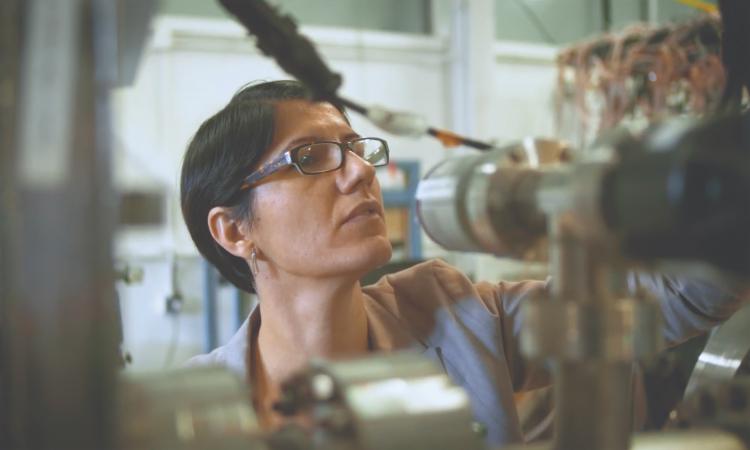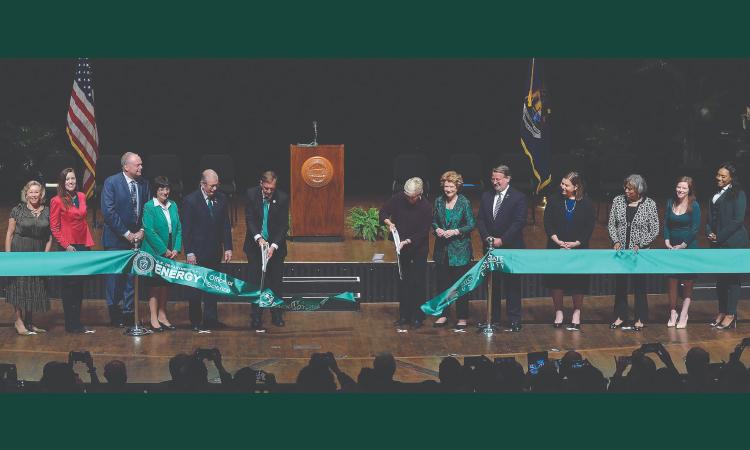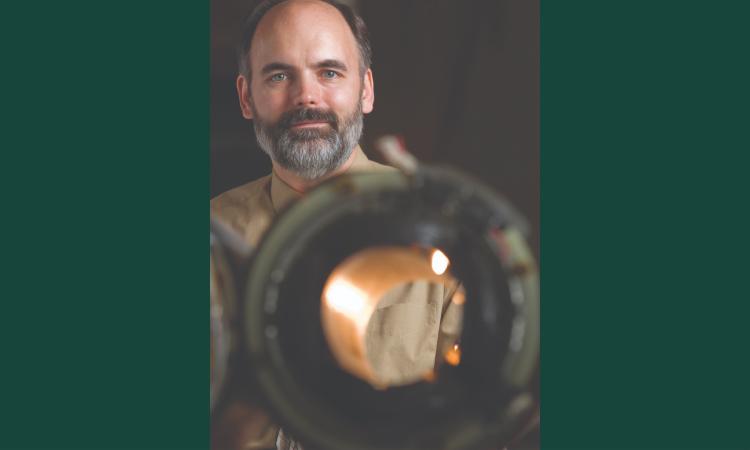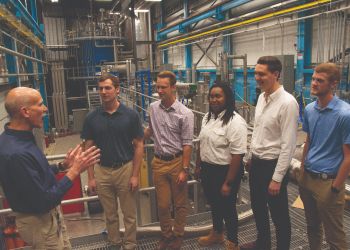Fourteen years later, Thomas Glasmacher remembers the rain most.
Two hours before stepping outside of a U.S. Department of Energy (DOE) building in Germantown, Maryland, on a December morning in 2008, Glasmacher, then a professor and associate director for operations at MSU’s National Superconducting Cyclotron Laboratory (NSCL), surrendered his cellphone and walked into a nondescript room alongside NSCL Director Konrad Gelbke and Fred Poston, MSU’s vice president for finance and operations. There, the Michigan State trio sat for an hour in uncomfortable, anxiety-inducing silence, awaiting the fate of MSU’s bid to bring a world-first scientific research center—the Facility for Rare Isotope Beams, or FRIB—to East Lansing.
To be certain, MSU stood a long shot to land the $730 million project. Not only was MSU competing against Argonne National Laboratory, a powerhouse DOE research center whose illustrious scientific history included creating the world’s first self-sustaining nuclear reaction (the famed Manhattan Project), but no university had ever successfully competed against a national laboratory for a government-funded research facility of this size and scope.
In traveling to Maryland, the MSU triumvirate clung to hope, but presumed DOE officials merely wanted to give their rejection face to face. But when the representatives finally entered the room, they shared an unexpected verdict: MSU would be home to FRIB.
“It’s rare my brain goes blank, but it did in that moment,” Gelbke said.
Though DOE officials followed with legalese and an overview of the next steps, from an immediate public announcement of the decision to the uneasy particulars of capturing congressional funding, Glasmacher, who had directed MSU’s exhaustive, yearlong effort to compete for FRIB, sat there, speechless and stunned. Minutes later, he, Gelbke and Poston stepped out into the wretched downpour. Mother Nature, it seemed, hadn’t gotten the message—or perhaps had put its money on an Argonne win.
“The rain was such a contrast to the euphoria of the moment, and that’s why it sticks out with me all these years later,” Glasmacher said. “We had the reward of this facility immediately meeting this cold, miserable rain.”
To much fanfare, FRIB—a so-called “discovery machine”—opened its doors earlier this year on the eastern edge of MSU’s campus.

Hosting the world’s most powerful heavy-ion accelerator, one propelling atoms at half the speed of light, FRIB allows scientists from MSU and around the globe to access more than 1,000 never-before-seen isotopes. FRIB-powered research is expected to fuel innovation in fields such as medicine, clean energy, homeland security and environmental science, push discovery in inspiring new directions and cement MSU’s commitment to advancing basic science and benefiting the common good.
THE FOUNDATION


